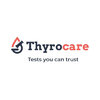Phlebotomist
90+ Phlebotomist Interview Questions and Answers

Asked in Dr Lal PathLabs

Q. How should blood samples be collected in the correct order of draw?
Blood samples are collected in a specific order to minimize contamination and ensure accurate results.
Start by verifying the patient's identity and confirming the test requirements.
Gather the necessary equipment, including gloves, tourniquet, alcohol swabs, and collection tubes.
Apply the tourniquet above the intended puncture site to make the veins more visible and accessible.
Clean the puncture site with an alcohol swab and allow it to dry.
Insert the needle into the vein and ...read more

Asked in Apollo Health and Lifestyle Limited

Q. What is GTT, what is the process of sample collection
GTT stands for Glucose Tolerance Test. It is a diagnostic test to measure how the body metabolizes glucose.
GTT is used to diagnose diabetes and other glucose metabolism disorders.
The process involves fasting, consuming a glucose solution, and multiple blood samples taken at specific intervals.
The blood samples are collected to measure the blood glucose levels before and after consuming the glucose solution.
The test helps determine how well the body regulates blood sugar level...read more
Phlebotomist Interview Questions and Answers for Freshers

Asked in Fortis Healthcare

Q. A healthcare worker who exclusively takes care of the blood collection process by drawing blood for diagnostic purposes, and assists the medical laboratory technologist, doctors, and nurses are referred to as a...
read moreA phlebotomist is a healthcare worker who draws blood for diagnostic purposes and assists medical professionals.
Phlebotomists collect blood samples from patients for testing and analysis.
They must follow strict safety protocols to prevent the spread of infection.
Phlebotomists also label and transport blood samples to the laboratory for analysis.
They may work in hospitals, clinics, or other healthcare settings.
Phlebotomy training programs are available and certification is oft...read more

Asked in Apollo Health and Lifestyle Limited

Q. What is the process of taking a sample for a lipid profile?
The process of taking a sample of lipid profile involves collecting a blood sample and analyzing it for various lipid levels.
Prepare the necessary equipment, including a blood collection tube, needle, and alcohol swab.
Identify the patient and explain the procedure to them.
Cleanse the puncture site with an alcohol swab.
Insert the needle into a vein and collect the required amount of blood into the collection tube.
Remove the needle and apply pressure to the puncture site to sto...read more

Asked in Tata 1mg

Q. Work experience in phlebotomist
I have 2 years of work experience as a phlebotomist in a busy hospital setting.
Performed venipunctures and collected blood samples from patients
Followed strict protocols and safety measures to ensure accurate and safe collection
Labeled and processed specimens for laboratory testing
Maintained proper documentation and record-keeping of all procedures
Provided excellent patient care and comfort during the phlebotomy process

Asked in Tata 1mg

Q. What is a liver function test?
Liver function test is a blood test that measures the levels of enzymes, proteins, and bilirubin in the blood to assess liver health.
Liver function test is used to diagnose liver diseases and monitor the effectiveness of treatment.
It measures levels of enzymes such as ALT, AST, and ALP, which are released into the blood when liver cells are damaged.
It also measures levels of proteins such as albumin and total protein, which are produced by the liver.
Bilirubin levels are also ...read more
Phlebotomist Jobs




Asked in Tata 1mg

Q. What is the correct order of draw for multiple blood collection tubes?
The order of draw for multiple collection is the sequence in which different types of tubes are filled with blood during phlebotomy.
The order of draw is important to prevent cross-contamination and ensure accurate test results.
The most common order of draw is as follows: blood culture tubes, coagulation tubes, serum tubes, heparin tubes, EDTA tubes, and other additive tubes.
This order helps to minimize the risk of additive carryover and maintain the integrity of the blood sam...read more

Asked in SRL Diagnostics

Q. Order of drow Size of needle What is plasma'serum How you prevent hemolysis sample What is homatoma and so on
Answering questions related to phlebotomy techniques and terminologies.
The order of draw is the sequence in which different blood collection tubes are filled during venipuncture.
The size of needle used for phlebotomy depends on the patient's age, vein size, and the type of test being performed.
Plasma is the liquid component of blood that remains after the cells and clotting factors have been removed.
Hemolysis of a blood sample can be prevented by using the correct needle size...read more
Share interview questions and help millions of jobseekers 🌟


Asked in Apollo Health and Lifestyle Limited

Q. What is the normal creatinine value?
The normal value of creatinine is around 0.6 to 1.2 milligrams per deciliter (mg/dL) in adults.
Creatinine is a waste product produced by muscles during normal metabolism.
It is filtered out of the blood by the kidneys and excreted in urine.
The normal range of creatinine levels may vary slightly depending on the laboratory and the individual's age, sex, and muscle mass.
Elevated creatinine levels may indicate kidney dysfunction or other medical conditions.
Low creatinine levels m...read more

Asked in Dr Lal PathLabs

Q. How do you upload the form for an HIV test?
To upload a form of HIV test, scan or take a clear photo of the form and save it as a digital file.
Scan the form using a scanner or use a smartphone to take a clear photo
Save the scanned image or photo as a digital file (e.g., PDF, JPEG)
Ensure the file size is within the acceptable limits for uploading
Use a secure and reliable platform to upload the form (e.g., hospital's online portal)
Follow any specific instructions provided for uploading the HIV test form

Asked in Vijaya Diagnostic Centre

Q. How do you prepare patients for sample collection?
To prepare patients for sample collection, explain the procedure, obtain consent, ensure patient comfort, and provide necessary instructions.
Explain the procedure to the patient, including the purpose of the sample collection and any potential risks or discomfort.
Obtain informed consent from the patient, ensuring they understand the process and their rights.
Ensure patient comfort by providing a clean and private environment, maintaining a calm and reassuring demeanor, and add...read more
Asked in Testiwol

Q. How do you collect a blood sample from a patient?
To collect a blood sample from a patient, a phlebotomist must follow proper procedures to ensure accuracy and patient comfort.
Verify patient's identity and confirm the order for the blood test
Select appropriate equipment such as needles, tubes, and alcohol swabs
Clean the puncture site with an alcohol swab and allow it to dry
Apply a tourniquet to make the veins more visible and easier to access
Insert the needle into the vein and collect the required amount of blood into the tu...read more

Asked in Hindustan Wellness

Q. *What is the order of drow? *What is bio medical west? *What is order of drow for multiple tube collection? *Working experiences?
The order of draw is the sequence in which blood collection tubes are filled during venipuncture.
The order of draw is important to prevent cross-contamination between tubes.
The most common order of draw is: blood culture, coagulation, non-additive, serum, heparin, EDTA, glycolytic inhibitor, and fluoride.
Bio Medical West is not related to the order of draw.
Working experiences should be discussed in detail during the interview.

Asked in Apollo Health and Lifestyle Limited

Q. How do you handle a situation when a puncture occurs?
When a puncture occurs during phlebotomy, it is important to remain calm and follow proper procedures to ensure patient safety.
Immediately stop the procedure and remove the needle or lancet.
Apply pressure to the puncture site with a sterile gauze pad or cotton ball to control bleeding.
If necessary, elevate the affected limb to reduce swelling.
Cleanse the area with an antiseptic solution to prevent infection.
Document the incident in the patient's medical record and report it t...read more

Asked in Dr Lal PathLabs

Q. What is order of draw Turnicate timing About BMW Hematoma, needle injury And about spill kit management etc.
Order of draw is the sequence in which different blood collection tubes are filled during venipuncture.
Order of draw is important to prevent cross-contamination and ensure accurate test results.
The most common order of draw is blood culture tubes first, followed by coagulation tubes, then serum tubes, and finally EDTA tubes.
For example, if a coagulation tube is drawn before a blood culture tube, it may contaminate the blood culture sample with anticoagulants.
Turnicate timing ...read more

Asked in Tata 1mg

Q. What is the correct order of draw?
The follow order of drop is the sequence in which blood collection tubes are filled during venipuncture.
The order is typically: blood culture tubes, coagulation tubes, serum tubes, heparin tubes, EDTA tubes, and then any other additive tubes.
This order helps prevent cross-contamination and ensures accurate test results.
It is important to follow the manufacturer's instructions for each specific tube.
The order may vary depending on the facility's protocol or the specific tests ...read more

Asked in Thyrocare Technologies

Q. What is the procedure for collecting a Fine Needle Aspiration Cytology (FNAC) sample? Please describe it briefly.
FNAC is a minimally invasive procedure to obtain tissue samples for cytological examination using a fine needle.
Preparation: Ensure the patient is informed and comfortable; explain the procedure and obtain consent.
Site Selection: Identify the lesion or mass using palpation or imaging techniques like ultrasound.
Aseptic Technique: Clean the skin with an antiseptic solution to minimize infection risk.
Needle Insertion: Use a fine needle (usually 22-25 gauge) to puncture the lesio...read more
Asked in Flebo.In

Q. How do you prefer to collect blood: with a syringe or a vacutainer?
Blood can be collected using either a syringe or a vacutainer, depending on the preference of the phlebotomist.
Select the appropriate equipment based on the patient's age, vein size, and the amount of blood needed.
Clean the site with an antiseptic solution and apply a tourniquet to make the vein more visible.
Insert the needle into the vein at a 15-30 degree angle and collect the blood into the syringe or vacutainer.
Remove the tourniquet and needle, apply pressure to the site,...read more

Asked in Karuna Management Services

Q. How can I collect blood from a newborn, and how can I convence of their parents?
To collect blood from a newborn, gain consent from parents, select appropriate site, warm the area, use a small gauge needle, and comfort the baby.
Gain consent from parents before proceeding with the blood collection.
Select an appropriate site for blood collection, such as the heel or hand.
Warm the area to increase blood flow and make the process easier.
Use a small gauge needle to minimize discomfort for the baby.
Comfort the baby during the procedure to reduce stress and ensu...read more

Asked in Tata 1mg

Q. What is the order of draw?
The order of draw refers to the sequence in which different blood collection tubes should be filled during venipuncture.
The order of draw is important to prevent cross-contamination and ensure accurate test results.
The general order of draw is blood culture tubes, coagulation tubes, serum tubes, heparin tubes, and EDTA tubes.
For example, a common order of draw is yellow (blood culture), light blue (coagulation), red or gold (serum), green (heparin), and lavender (EDTA).

Asked in Dr Lal PathLabs

Q. What is the correct order of draw for blood collection?
The order of draw is crucial for accurate blood test results, preventing contamination between different tube additives.
1. Blood culture tubes: Used first to prevent contamination.
2. Light blue top: Contains sodium citrate for coagulation tests.
3. Red top: No additives, used for serum tests.
4. Gold or tiger top: Contains a gel separator for serum tests.
5. Green top: Contains heparin for plasma tests.
6. Lavender top: Contains EDTA for hematology tests.
7. Gray top: Contains flu...read more

Asked in Metropolis Healthcare

Q. Why did you choose phlebotomy?
I chose phlebotomy because I have a passion for helping others and a strong interest in the medical field.
I have always been fascinated by the human body and how it functions.
I enjoy working with people and providing them with care and support.
Phlebotomy allows me to directly contribute to patient care and well-being.
I find the process of drawing blood and collecting samples to be challenging and rewarding.
I appreciate the importance of accurate and efficient blood collection...read more

Asked in Tata 1mg

Q. What is the correct order of draw for collecting blood samples for laboratory tests?
The order of draw is crucial for preventing contamination and ensuring accurate lab results during blood collection.
1. Blood culture bottles: Used for detecting infections.
2. Light blue top tubes: Contain sodium citrate for coagulation tests.
3. Red top tubes: No additives, used for serum tests.
4. Gold or tiger top tubes: Contain a gel separator for serum tests.
5. Green top tubes: Contain heparin for plasma tests.
6. Lavender top tubes: Contain EDTA for hematology tests.
7. Gray...read more

Asked in Tata 1mg

Q. What is the full form of TRF?
TRF stands for Thrombin Receptor Full-length
TRF is a protein that plays a role in blood clotting
It is also known as PAR-1 (Protease-Activated Receptor 1)
TRF activation leads to platelet activation and aggregation
It is a potential target for anti-thrombotic therapy

Asked in Tata 1mg

Q. Lipid Profile fasting requirement
Fasting for 9-12 hours is required for accurate lipid profile results.
Fasting helps to get accurate measurements of cholesterol and triglyceride levels.
Water is allowed during the fasting period.
The fasting period should be at least 9-12 hours before the blood test.
If the patient eats or drinks anything other than water during the fasting period, it can affect the results.
Certain medications can also affect lipid profile results, so it's important to inform the healthcare pro...read more

Asked in Dr Lal PathLabs

Q. What are the different types of blood collection methods?
Blood collection methods include venipuncture, capillary, and arterial sampling, each suited for specific tests and patient needs.
Venipuncture: Involves drawing blood from a vein, commonly used for most laboratory tests.
Capillary Sampling: Involves collecting blood from a fingerstick or heelstick, often used for infants or point-of-care testing.
Arterial Sampling: Involves drawing blood from an artery, typically used for blood gas analysis.

Asked in Dr Lal PathLabs

Q. What are the parameters of Liver Function Tests (LFT)?
Liver Function Tests (LFT) assess liver health through various biochemical markers in the blood.
Alanine Aminotransferase (ALT): Elevated levels indicate liver damage.
Aspartate Aminotransferase (AST): High levels can suggest liver disease or damage.
Alkaline Phosphatase (ALP): Increased levels may indicate bile duct obstruction or liver disease.
Bilirubin: High levels can lead to jaundice and indicate liver dysfunction.
Albumin: Low levels may suggest chronic liver disease or liv...read more

Asked in Max Healthcare

Q. What is the normal range of blood pH?
The normal range of blood pH is between 7.35 and 7.45.
Normal blood pH is slightly alkaline
Values below 7.35 indicate acidosis
Values above 7.45 indicate alkalosis

Asked in Healthians

Q. Different test for different disease screening
Different diseases require different tests for screening purposes.
There are various tests available for different diseases such as blood tests, urine tests, imaging tests, genetic tests, etc.
For example, a blood test can be used to screen for conditions like diabetes, cholesterol, and HIV, while a urine test can be used to screen for kidney and bladder infections.
Imaging tests like X-rays, CT scans, and MRI scans can be used to screen for conditions like cancer, heart disease...read more

Asked in Tata 1mg

Q. What is the correct order of draw, and what tests are associated with each tube?
Knowledge of draw order and tests is essential for a phlebotomist.
Phlebotomists must know the correct order of draw to prevent cross-contamination of samples.
They should also be familiar with the different types of tests and the tubes used for each test.
Examples of tests include CBC, BMP, CMP, PT/INR, and glucose.
Different tubes include lavender top for CBC, green top for BMP/CMP, light blue top for PT/INR, and gray top for glucose.
Phlebotomists should also know how to proper...read more
Interview Questions of Similar Designations
Interview Experiences of Popular Companies









Reviews
Interviews
Salaries
Users


















